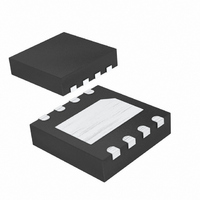MAX1086ETA+T Maxim Integrated Products, MAX1086ETA+T Datasheet - Page 11

MAX1086ETA+T
Manufacturer Part Number
MAX1086ETA+T
Description
IC ADC 10BIT 150KSPS 8-TDFN
Manufacturer
Maxim Integrated Products
Datasheet
1.MAX1086ETAT.pdf
(15 pages)
Specifications of MAX1086ETA+T
Number Of Bits
10
Sampling Rate (per Second)
150k
Data Interface
MICROWIRE™, QSPI™, Serial, SPI™
Number Of Converters
1
Power Dissipation (max)
1.6mW
Voltage Supply Source
Single Supply
Operating Temperature
-40°C ~ 85°C
Mounting Type
Surface Mount
Package / Case
8-WDFN Exposed Pad
Number Of Adc Inputs
2
Architecture
SAR
Conversion Rate
150 KSPs
Resolution
10 bit
Input Type
Differential
Interface Type
3-Wire (SPI, QSPI, MICROWIRE)
Voltage Reference
External
Supply Voltage (max)
5 V
Maximum Power Dissipation
1454.5 mW
Maximum Operating Temperature
+ 85 C
Mounting Style
SMD/SMT
Minimum Operating Temperature
- 40 C
Lead Free Status / RoHS Status
Lead free / RoHS Compliant
Other names
MAX1086ETA+T
When using SPI interface (Figure 8a) or MICROWIRE
(Figure 8a and 8b), set CPOL = CPHA = 0. Two 8-bit
readings are necessary to obtain the entire 10-bit result
from the ADC. DOUT data transitions on the serial
clock’s falling edge and is clocked into the µP on
SCLK’s rising edge. The first 8-bit data stream contains
the first 8-bits of DOUT starting with the MSB. The sec-
ond 8-bit data stream contains the remaining two result
bits (B1, B0) and two trailing sub-bits (S1, S0). DOUT
then goes high impedance.
Using the high-speed QSPI interface (Figure 9a) with
CPOL = 0 and CPHA = 0, the MAX1086–MAX1089
support a maximum f
reading is necessary to obtain the entire 10-bit result
from the ADC. DOUT data transitions on the serial
clock’s falling edge and is clocked into the µP on
Figure 8a. SPI Connections
X = Don’t care
Table 1. Detailed SSPCON Register Content
1-Channel True-Differential ADCs in SOT23 and TDFN
SSPOV
SSPEN
SSPM3
SSPM2
SSPM1
SSPM0
WCOL
CKP
CONTROL BIT
and is available in MSB-first format. Observe the
SCLK to DOUT valid timing characteristic. Clock
data into the µP on SCLK’s rising-edge.
SPI
Bit 7
Bit 6
Bit 5
Bit 4
Bit 3
Bit 2
Bit 1
Bit 0
MISO
SCK
I/O
SS
SPI and MICROWIRE Interface
150ksps, 10-Bit, 2-Channel Single-Ended, and
______________________________________________________________________________________
MAX1086–MAX1089
V
SCLK
DD
SETTINGS
of 8MHz. One 8- to16-bit
X
X
1
0
0
0
0
1
CNVST
SCLK
DOUT
QSPI Interface
MAX1086–
MAX1089
Write Collision Detection Bit
Receive Overflow Detect Bit
Synchronous Serial Port Enable Bit.
0: Disables serial port and configures these pins as I/O port pins.
1: Enables serial port and configures SCK, SDO and SCI pins as serial port pins.
Clock Polarity Select Bit. CKP = 0 for SPI master mode selection.
Synchronous Serial Port Mode Select Bit. Sets SPI master mode and selects
f CLK
= f
OSC
SYNCHRONOUS SERIAL PORT CONTROL REGISTER (SSPCON)
/ 16.
SCLK’s rising edge. The first 10 bits are the data and
the next two bits are sub-bits (S1, S0). DOUT then
goes high impedance (Figure 9b).
The MAX1086–MAX1089 are compatible with a
PIC16/PIC17 microcontroller (µC), using the synchro-
nous serial port (SSP) module
To establish SPI communication, connect the controller
as shown in Figure 10a and configure the PIC16/PIC17
as system master. This is done by initializing its syn-
chronous serial port control register (SSPCON) and
synchronous serial port status register (SSPSTAT) to
the bit patterns shown in Tables 1 and 2.
In SPI mode, the PIC16/PIC17 µCs allow eight bits of
data to be synchronously transmitted and received
simultaneously. Two consecutive 8-bit readings (Figure
10b) are necessary to obtain the entire 10-bit result
from the ADC. DOUT data transitions on the serial
clock’s falling edge and is clocked into the µC on
SCLK’s rising edge. The first 8-bit data stream contains
Figure 8b. MICROWIRE Connections
MICROWIRE
I/O
SK
SI
PIC16 and SSP Module and
PIC17 Interface
CNVST
SCLK
DOUT
MAX1086–
MAX1089
11







